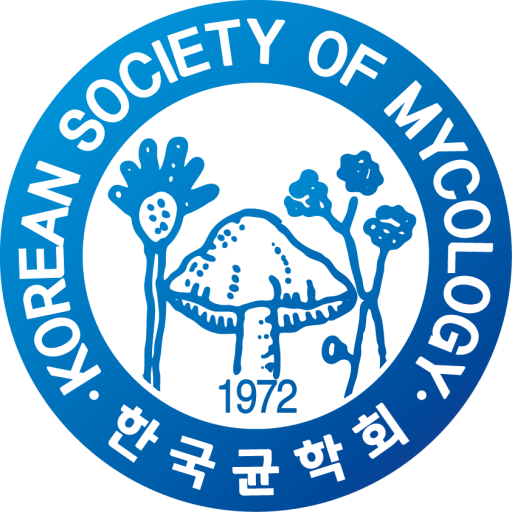Isolation and Characterization of Two Unreported Penicillium euglaucum and Talaromyces purpureus Isolated from Soil in Korea
Geun-Tae Kim1, Min-Gyu Kim1, Jun-Woo Choi1, Seo-Ryeong Lee1, Seong-Keun Lim1, Seung-Yeol Lee1,2*, Hee-Young Jung1,2
1Department of Plant Medicine, Kyungpook National University, Daegu, Korea
2Institute of Plant Medicine, Kyungpook National University, Daegu, Korea
*Email: leesy1123@knu.ac.kr
To detect soil-inhabiting fungi in Korea, two fungal strains designated as KNUF-21-062 and KNUF-23-215 were isolated from soil samples collected in Daegu, Korea. For observing the fungal characteristics of the strain KNUF-21-062, strain was cultured on potato dextrose agar (PDA), malt extract agar (MEA), Czapek yeast extract agar (CYA), yeast extract sucrose agar (YES), dichloran 18% glycerol agar (DG18), creatine sucrose agar (CREA). Morphological characteristics of strain KNUF-21-062 were similar to P. eugalucum CBS 323.71T, showing biverticillate conidiophores, ampulliform phialides, with globose conidia (2.1–2.5 × 2.2–2.7 μm). The internal transcribed spacer (ITS) regions, β-tubulin (BenA), calmodulin (CaM), RNA polymerase II subunit (RPB2) genes were used for the phylogenetic analysis. BLAST results of ITS regions, BenA, CaM, RPB2 gene sequences showed similarities of 99.8, 99.3, 98.7, 98.7 %, respectively, with P. euglaucum CBS 323.71T, and formed same clade in the phylogenetic tree. In case of strain KNUF-23-215, it was cultured on six aforementioned media and oatmeal agar. Morphological characteristics of strain KNUF-23-215 were similar to those of T. purpureus CBS 475.71T by having monoverticillate conidiophores, solitary flask-shaped phialides, with subglobose to ellipsoidal conidia (3.3–3.6 × 2.8–3.4 μm). BLAST results of ITS regions, BenA, RPB2 gene sequences showed similarities of 100, 100, 99.5%, respectively, with the T. purpureus CBS 475.71T, and formed same clade in the phylogenetic tree. Based on cultural, morphological, and phylogenetic analyses, two fungal strains were identified as P. euglaucum KNUF-21-062 and T. purpureus KNUF-23-215, respectively, that have not been previously reported in Korea.

 English
English